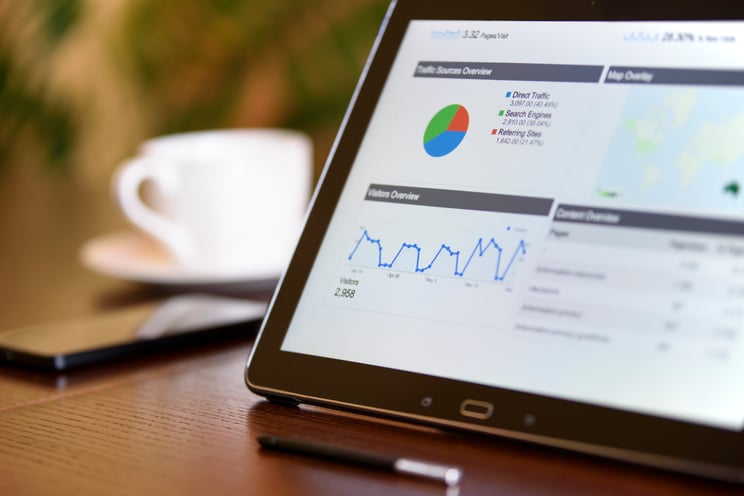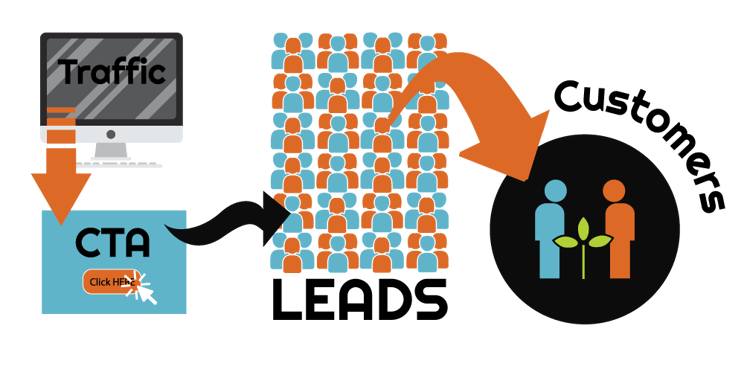Whether you are CEO, CMO, Marketing Manager, or an associate the days of marketing by impression are over. If you aren't being asked now, you soon will be expected to show the return on investment (ROI) for your marketing activities.
 The good 'ole days are gone
The good 'ole days are gone
Back in the early days of digital we measured digital pretty much the same way we measured analog efforts--impressions. We'd pick a targeted channel and pay for advertising by impression. Truth is you can still buy digital that way.
Eventually pay per click came along and pricing models shifted a little, but ultimately we were still paying for exposure and mostly this was an improvement because the exposure was even more targeted.
For a long time this worked and everyone was happy, after all, this system was easy to understand. It was digital, but the parallels to the analog world were so close that it was easy enough to explain to the boss or client.
Think of it like this: if you bought a print ad in a newspaper you could know the impressions based on two numbers. The first, subscriptions, and the second sales on a given day. Online ads worked the same. We could measure how many people saw a given ad, and we also could measure how many people clicked on it.
While on the whole people were happy with this, we never knew what happened next. Did people test drive the car in the ad? Buy it? Those conversions were harder to measure.
Today we have a better way
Modern technology lets us interact with, and nurture a customer or client along every step of their buyer's journey. From awareness to consideration,to making a buying decision, we can be engaged, helpful, and and informed. And because we've been engaged with the customer all along their buying journey, we can know exactly the ROI of our marketing efforts.
Think of it like this: now when someone reads an article on a blog they can post a comment and ask a question, or request to download a helpful tip sheet or white paper. A few days later we can follow up with additional useful information and answer more questions. After that they may reach out in person or over the phone and we might demonstrate a product or service. Then the customer, armed with the right information chooses to buy from us. All of these activities are linked, customized to the individual, and trackable by the business.
Because we have all of that information we can measure it. Take website traffic as an example. We can count how many people visit a website, how many people click on a particular button, or call to action, and then ultimately how many of those people buy. Each step of that funnel can be measured, tracked, and analyzed.
 So lets imagine this website had 4,000 visits in a month and of those 4,000 visitors, 40 submitted their email through a call to action. We now have 40 leads in our sales funnel. Then we sell to 2 of those customers. How do we measure the ROI?
So lets imagine this website had 4,000 visits in a month and of those 4,000 visitors, 40 submitted their email through a call to action. We now have 40 leads in our sales funnel. Then we sell to 2 of those customers. How do we measure the ROI?
How to measure ROI
We'll need a little more data to calculate the ROI. First of all, we need to know the lifetime value of our customer, and second we'll need to know how much we spent on marketing. Let's say our average customer lifetime value is $100,000.00 and in this same month we spent $5,000.00 on marketing.
That means our marketing efforts in this example led to $200,000 customer lifetime value. Thus our traffic cost $1.25 per website visit, leads cost $125 per lead, and the cost of acquisition for the new customers was $2,500 per customer. The resulting return on investment would be 40x the initial investment in marketing.
These principals can be applied to marketing activities that you can quantify and measure, and that's the beauty of digital marketing, we have all the data to do just that. So next time someone asks you to show them the ROI, do the math and make informed decisions to grow your business.
